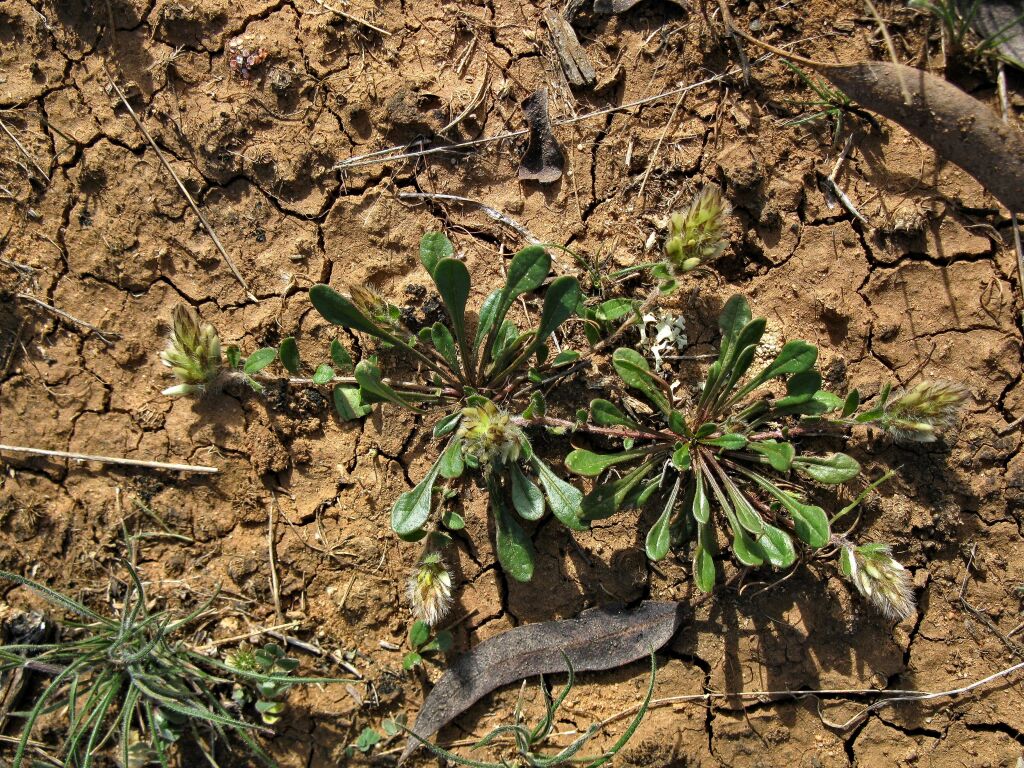Ptilotus spathulatus
(R.Br.) Poir.Deeply taprooted herb, with several prostrate usually unbranched stems to 40 cm long. Stems pubescent, at least toward spike, often reddish. Basal leaves spathulate, to c. 7 cm long, to 1 cm wide, expanded only in the distal 1–2.5 cm, ± glabrous and somewhat fleshy; stem leaves reducing to obovate or oblanceolate, expanding shortly above base. Spike upturned, cylindric, 2–12 cm long, 2–2.5 cm diam., very dense, yellow-green; bract ovate, c. 8 mm long, brown; bracteoles broadly ovate, as long as bract, straw-coloured or brown-tipped; perianth 9–12 mm long; tepals free virtually to base, outer surface densely silky-plumose to within 1 mm of apex, inner surface glabrous except for loose woolly tuft at base; fertile stamens 3–5; ovary subsessile, with fine hairs on keels near apex, style eccentric. Flowers mainly Aug.–Jan.
LoM, MuM, Wim, VVP, VRiv, RobP, MuF, GipP, OtP, Gold, CVU, GGr, DunT, NIS, EGU. Also WA, SA, NSW, Tas. Widespread and locally common in drier, semi-fertile plains country in northern and western Victoria, confined to loamier soils of swales and depressions in dune-mallee areas. Now rare near Melbourne (Keilor Plains, Werribee areas) through habitat destruction. Collected recently from limestone areas near Omeo.
 Spinning
Spinning


